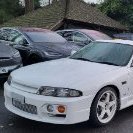I'm buying a Skyline... What should I look for?
Announcements
-
Similar Content
-
Latest Posts
-
I get 9 hours a night, every night 🤣
-
By drifter17a · Posted
If it sits on shelf opened then it is no good and I don’t have a use for it really hence why throw away. -
But don't throw away the unused oil in the opened bottle. That's just daft.
-
All comes down to recommendations and how much you have. If you have the money, both are a great piece of mind to be done. And I believe most people would tell you to do them. Any fuel sitting in the oil may have caused degradation. Personally, I have reused a timing belt after sitting for 2 years whilst getting a rebuild. Didn't have any issues. Id probably dump the oil, fill with fresh, and get on your way. But, keep in mind, I'm just some guy on the internet.
-
The 5-6hrs is get is plenty? Sometimes I even get up to 7.....
-









Recommended Posts
Create an account or sign in to comment
You need to be a member in order to leave a comment
Create an account
Sign up for a new account in our community. It's easy!
Register a new accountSign in
Already have an account? Sign in here.
Sign In Now